by Mike Gulett –
Wheels play an important part in the looks of classic cars or any car for that matter. They also play a role in the performance, handling and safety of cars but today I am only interested in the looks.
Many car enthusiasts are putting the wrong wheels on their classic cars and have been doing so for many years. I know I have written about this before but the situation is not getting any better and I do not see any change to this trend in bad taste anytime soon.
I have been watching TV re-runs of recent Mecum auctions and naturally I spend a lot of time on-line reviewing cars for sale or up for auction during this coronavirus situation so I see car-wheel combinations that really bug me, which is how this article came about.
The original manufacture of any car almost always delivered that car with the best looking wheels. The after market wheel manufacturers naturally do not agree with me on this and they have convinced many thousands of classic car owners to buy their wheels and change the looks of their cars, or trucks, for the worse. Some modern cars are being built with 19 inch or 20 inch or even larger wheels. These wheel sizes were part of the original design and thus fit the look of that car, which is not the case for a car originally designed for a 15 inch wheel and now is running on 20 inch wheels.
Sometimes this hurts my eyes when I see, for example, a restomod ’69 Camaro with 20 inch diameter wheels, or larger. The wheels do not fit properly in the wheel openings and the builder then installs air suspension which lowers the car over the wheels making a real mess visually.
The wheels impact the stance of the car and wheels that are significantly larger than the original designer intended can seriously ruin the stance. The wheel can be wrong even it it is the right diameter. The style of the wheel is important too, after all the wheel was selected by the car’s designer as the wheel he thought was best for that car.
There are exceptions to the original manufacture wheel rule and they involve a ’60s or ’70s American car with either Crager mags or American Racing Torq Thrust wheels, which seem to look just right on American muscle cars from that era. They may even look fine when they are 16 inch instead of the original 15 inch (15 inch are preferred). Wheels should definitely not be larger than 16 inch in a ’60s or ’70s muscle car, please – even if they are Cragers or American Racing wheels.
Choosing the wrong wheel style and size is mainly limited to American cars but not always. There are examples of Ferrari, Porsche, Triumph, Volvo, Alfa Romeo and yes even Iso Grifo cars with the wrong wheels.
I know many of you may disagree with me, which is fine, please share your thoughts in the Comments section.
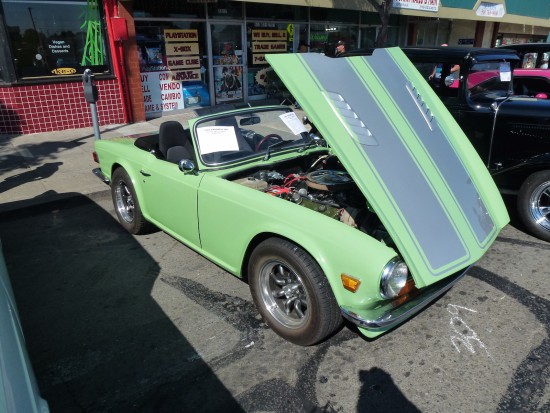
Nothing looks better on a Triumph TR6 than the original factory wheels (not these) – photo by Mike Gulett
I also realize that many of the bad wheel offenders are younger classic car collectors (which I love) and they are putting their own stamp on their car (which I also love). I think that is understandable I just wish they had better taste.
Let us know what you think about wheels in the Comments.
More bad wheels examples below.
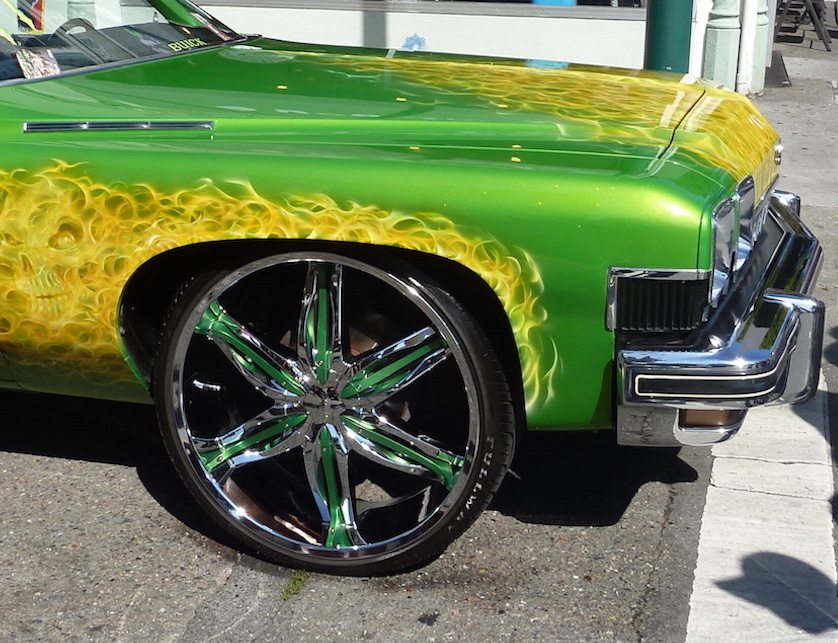
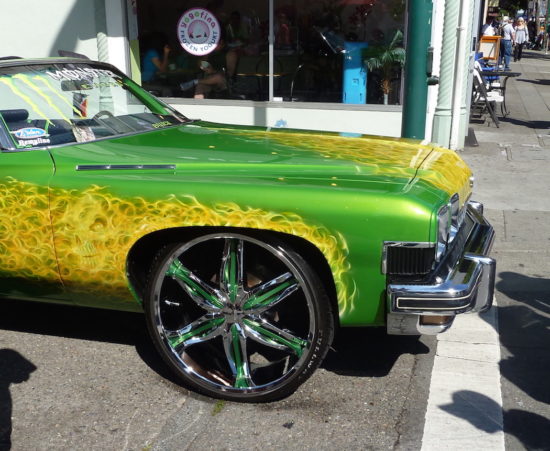


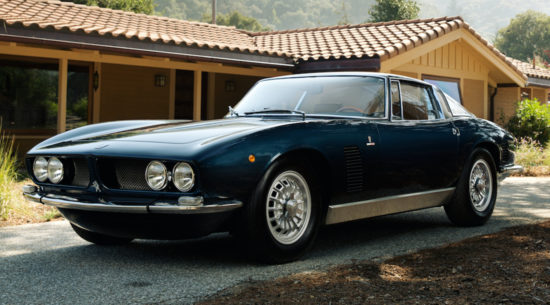
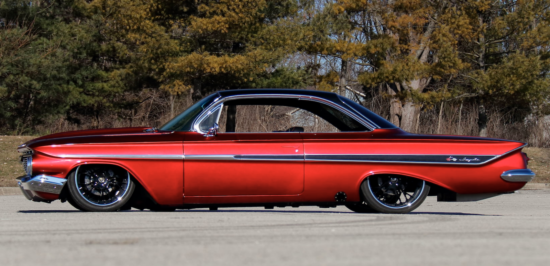
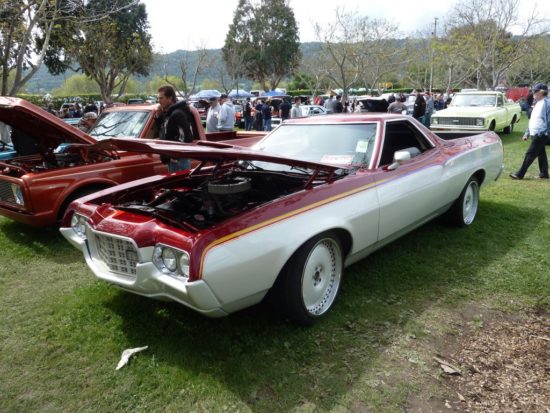

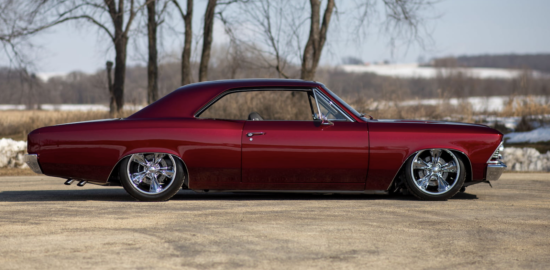


Well said,Mike. We’ve seen it before but that’s a lovely Grifo pic by Eamon Duffy
Mike, completely agree! Wheels make the car. There’s been an explosion in the aftermarket wheel market, especially since the 1960s and 70s. While I typically prefer the “stock“ wheel that would come on a car originally, sometimes aftermarket wheels make a car look fantastic. For instance, BBS made and still makes a lot of aftermarket wheels, which particularly look great on BMWs. I know that for instance, a lot of people will swap out the original equipment TRX wheels and tires that were OEM and came on certain 1980s BMW’s, for BBS and other aftermarket wheels, as the TRX wheel and tire combo left a lot to be desired. Alpina too makes terrific looking aftermarket wheels for BMWs and look terrific on the 1970’s BMW 3.0CS coupes for instance. As you point out however, sometimes people make wheel and tire combination choices that leave a lot to be desired. The photograph you included of the Triumph TR6 for instance is particularly bad! Typically, stock is best. However, to each their own and whatever rows your boat. If someone wants to modify their car, they should go for it if it makes them happy. One of the joys of car ownership. They just shouldn’t have an expectation that people will like their choice!
Beauty is in the eye of the beholder and to each his own I say.
I agree with that idea in general, except when I am forced to look at someone else’s “beauty” that hurts my eyes especially when I think about what should have been.
I hate classic cars dat look like “hotwheels”. For me personaly the wheels must be period correct, i don’t mind the Iso Griffo with Lambo wheels. for all i know they might have bin on that car for 50 years. As of diameter one inch larger than original is often acceptebel as long it does not disrupt the style in witch the car is developed. if you combine that with lowering the car for an inch or two it wil have a great stance. But that are just my personal limmits.
The Lamborghini wheels are beautiful and the Iso Grifo is beautiful but because of history they just do not go together.
Like an Espada with wire wheels it is just not right.
Right on, Mike!
I’ve had the same thoughts for years, but thought I must be missing something, since the proliferation of these image-destructive wheels had been so great.
Maybe we should print some T-SHIRT shirts and start a club?
Mike,
I think those of us that agree with you are in the minority. Another issue, perhaps more important than looks, is failing to include performance in the equation, especially the affects of changing offset. Car design includes the wheel and tire size in the formula for suspension and chassis. I’ve owned my Pantera GTS for about 44 years. The only change I find acceptable is what I did, move the 8 inch Campys to the front and replaced them with 10 inch Campys that were available in Europe. To work correctly, a change in the rear sway bar was needed, which I also made. Personally, I think the wheels Tom Tjaarda designed are incredible looking, and I’ve never had any interest in changing them. Tires are a problem with 15 inch diameter wheels, but I’ve made the move to the same Avons that the GT40 and Cobra guys ride on. They improved the handling and braking exponentially from the BFGoodrich Radial T/A’s most of used before. They’re relatively expensive, but worth it in all respects. As Roger Kraus (Racing Tires) suggested, I also added 3M film directly behind my rear tires because the Avons are like race tires in that they pick up and throw stuff at the paint…
Richard,
I am all for increasing the width of tires on classic cars if done properly. I also love the original Pantera wheels. And protecting paint is always a good idea.
It’s never been my first choice but it’s difficult to find good tire options for a 15 rim. Also, with a larger diameter rim you have a shorter sidewall which automatically gives a wider tire patch. I’ve experienced better handling and traction (and always increasing the rim width on the rears) and for that it’s worth the upgrade. There may be a tradeoff but it does not have to look ridiculous.
I changed the factory wheels on my ’09 Pontiac G8 GT to VMRs for a couple of reasons. 1) I like the look a little better and 2) they are 1/2″ wider with a slightly different offset. Both sets are 19″ (the base G8 has 18s).
Wes,
Looks good to me.
Thank you, Mike. The car mostly sits in the garage these days. But it was a daily driver and has 190,000 miles on the clock and it still runs well. The only major maintenance was replacing cam followers after one failed about 5,000 miles ago. Damn DOD. Otherwise LS engines are bulletproof if well-maintained.
Wes Stewart , your Pontiac looks great with those wheels , but I think that you will find that your car is a rebadged Australian built Holden Commodore , used as Police pursuit cars in Oz .
Wayne, thank you for the compliment. Yes, I am aware that Holden was the builder of the G8s and the Chevy SSes. I considered buying a Chevy which had more HP and perhaps better handling but frankly I didn’t like the looks as well at the G8.
Those wheels look great on your G8. I wish GM would still import their Aussie based Holdens. Super neat cars.
Rob , unfortunately that is no longer possible as GM closed all Australian manufacture of cars and Australia now no longer makes any cars .
Thanks, Rob. Unfortunately, as Wayne says Holden was shut down.
Wayne and Wes, I had heard something about GM Australian being possibly impacted but did not know that all production ceased. That is a shame. Ford used to produce cars there too. I recollect reading in a book about the Ford Sierra XR8i which was the Ford Sierra body (USA’s Merkur) with 302 Ford V8 power. Aussie built. Now, that would be a neat car as well.